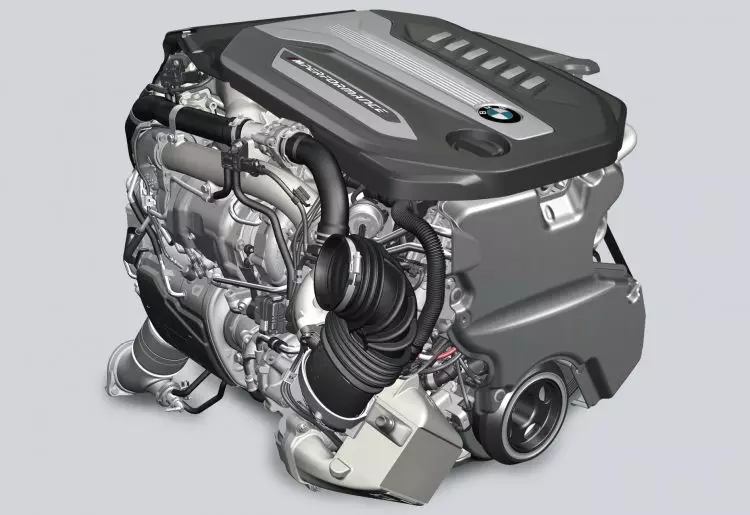The new BMW 750d xDrive is the Bavarian brand's model with the most powerful diesel engine ever.
In the lower segments, Diesel engines have been losing expression. Blame it on increasingly stringent environmental regulations, which have made diesel engines more and more expensive to produce. And of course, merit the new gasoline engines.In the luxury segment this problem does not exist, simply because the cost of production is not an issue. Customers are willing to pay whatever it takes to have what they want.
NOT TO BE MISSED: All the news (from A to Z) at the 2017 Geneva Motor Show
Even if it's a super diesel! As is the case with the new BMW 750d xDrive, a luxury saloon weighing more than two tonnes equipped with a 3.0 liter diesel engine with four turbos mounted in sequence. The practical result is this:
As you can see, the new 750d is a true diesel locomotive, capable of accelerating from 0-100 km/h in just 4.6 seconds and from 0-200 km/h in just 16.8 seconds. The advertised consumption (NEDC cycle) is 5.7 l/100km – eventually with a nail turned upside down on top of the accelerator it is possible to reach this consumption.
Otherwise, the numbers of this engine are overwhelming: at 1,000 rpm (idle) this engine delivers 450 Nm of torque(!) , but it is between 2000 and 3000 rpm that this value reaches its climax, 760 Nm of torque. At 4400 rpm we reached maximum power: a nice 440 hp.
In this particular, there is only one brand that does better, Audi. But it needed more cylinders and more displacement, we talk about the new V8 TDI of the Audi SQ7.

Putting this value into perspective we were even more impressed. The petrol-powered BMW 750i xDrive with 449 hp takes just 0.2 seconds less from 0-100 km/h than the 750d xDrive.
For now, this engine is only available in the BMW 7 Series, but most likely it will soon appear in other models such as the BMW X5 and X6. Come them!
How did BMW get these values?
BMW was the first brand to assemble three turbos in a row, and now it is once again a pioneer in associating four turbos in a row in a diesel engine.As you know, turbos need exhaust flow to work – let's forget about the exceptions to this rule, namely Audi electric turbos or Volvo compressed-air turbos, because that's not the case.
At low revs this 3.0 liter six-cylinder engine runs only two low-pressure turbos at the same time. As there is little gas pressure, it is easier to put smaller turbos to work, thus avoiding the so-called «turbo-lag». Of course at higher revs, these turbos don't fit…
That's why as the engine speed increases, as there is an increase in the flow and pressure of the exhaust gases, the electronic engine control gives order to a throttle system to channel all exhaust gases to a 3rd variable geometry turbo. high pressure.
From 2,500 rpm, the 4th large turbo starts operating, which contributes decisively to the engine's response at medium and high speeds.
So, the secret of this engine's power is in this turbo and exhaust gas synchronization game. Remarkable isn't it?
If the topic of “superdiesel” raises your interest, we will be able to return to this subject shortly. Leave us your opinion on our Facebook and share our contents.
